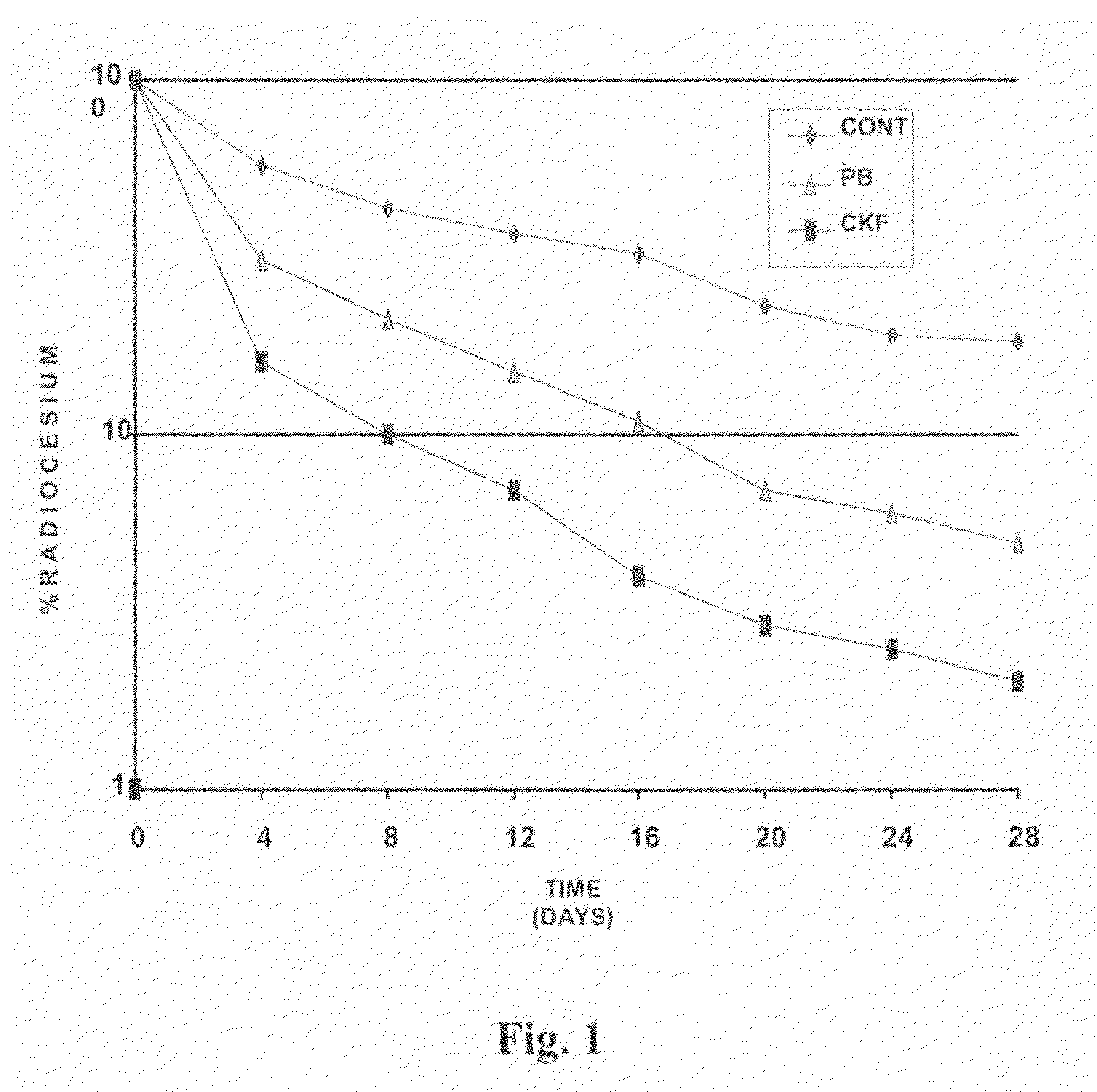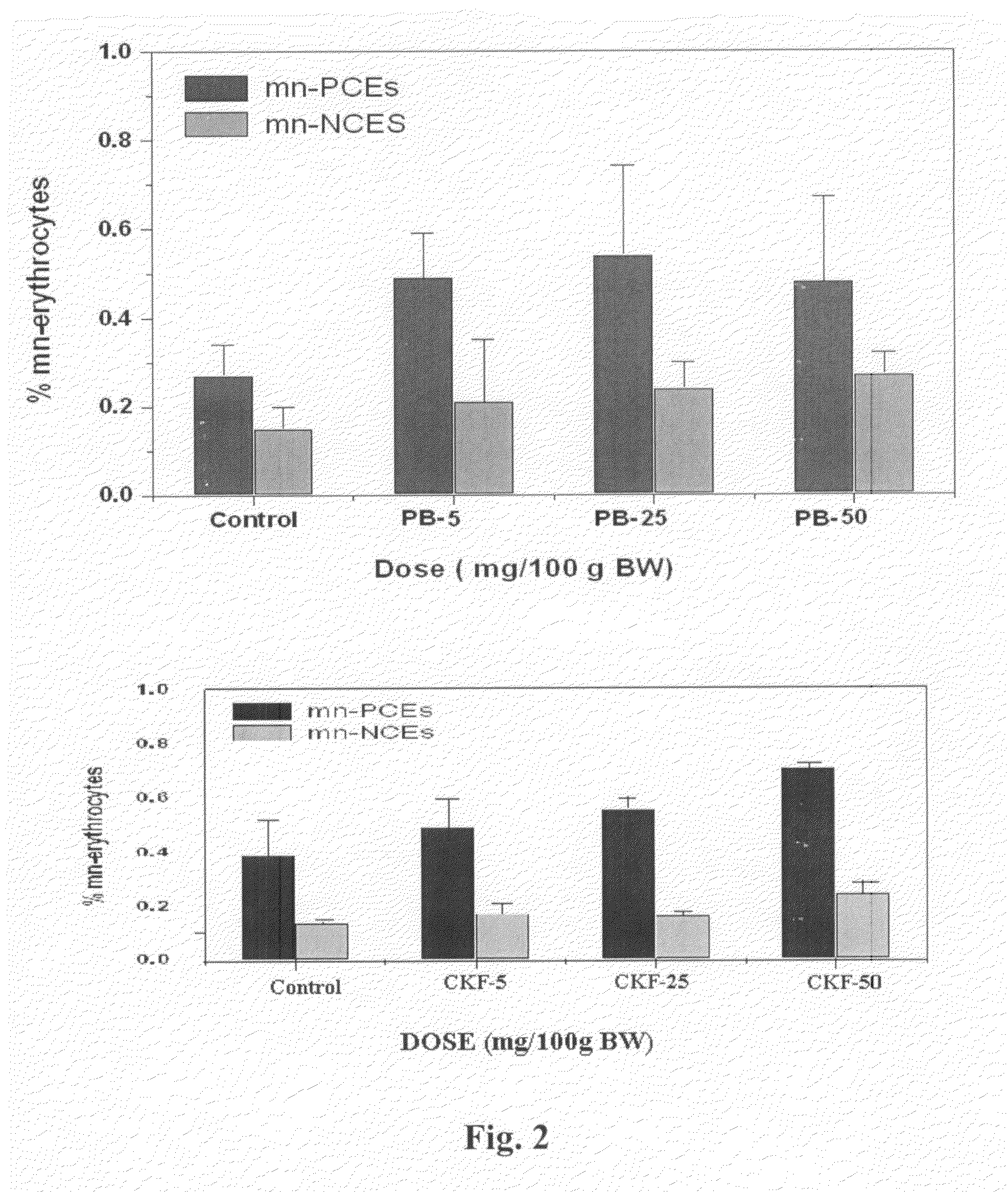Calcium Potassium Ferrocyanide, a prophylactic mixture comprising this compound and the use thereof for decorporation of Radiocesium in subjects affected by nuclear radiation
a potassium ferrocyanide and prophylactic mixture technology, applied in the field of prophylactic mixtures, can solve the problems of only being protected against isotopes, essentially radiostrontium, and accompanied by the formation of a considerable amount of radioactive by-products
- Summary
- Abstract
- Description
- Claims
- Application Information
AI Technical Summary
Benefits of technology
Problems solved by technology
Method used
Image
Examples
Embodiment Construction
[0055]The invention encompasses the formulation of a prophylactic mixture used for the decorporation of the known radionuclides in the event of their release in the environment. The mixture is sparingly soluble and has a long shelf life and it is not affected even by the hot and humid climate of a tropical country like India. It can be stored as water suspension but preferably in tablet / capsular form. The mixture according to the invention comprises:[0056](a) Calcium Carbonate (CaCO3): 1000-1500 mg, more preferably 1100-1400 mg, most preferably 1200-1300 mg being equivalent to 480-520 mg of elemental calcium.[0057](b) Calcium Iodate [Ca(IO3)2]: 45-65 mg, more preferably 50-60 mg, most preferably 52-56 mg being equivalent to ˜33 mg of stable iodine.[0058](c) Calcium Potassium Ferrocynide [CaK2Fe(CN)6]: 900-1100 mg, more preferably 950-1050 mg, most preferably 980-1020 mg.
[0059]The above mixture (most preferably weighing 2.2-2.4 g) can be made as a suspension in 15 ml of drinking wate...
PUM
 Login to View More
Login to View More Abstract
Description
Claims
Application Information
 Login to View More
Login to View More - R&D
- Intellectual Property
- Life Sciences
- Materials
- Tech Scout
- Unparalleled Data Quality
- Higher Quality Content
- 60% Fewer Hallucinations
Browse by: Latest US Patents, China's latest patents, Technical Efficacy Thesaurus, Application Domain, Technology Topic, Popular Technical Reports.
© 2025 PatSnap. All rights reserved.Legal|Privacy policy|Modern Slavery Act Transparency Statement|Sitemap|About US| Contact US: help@patsnap.com



